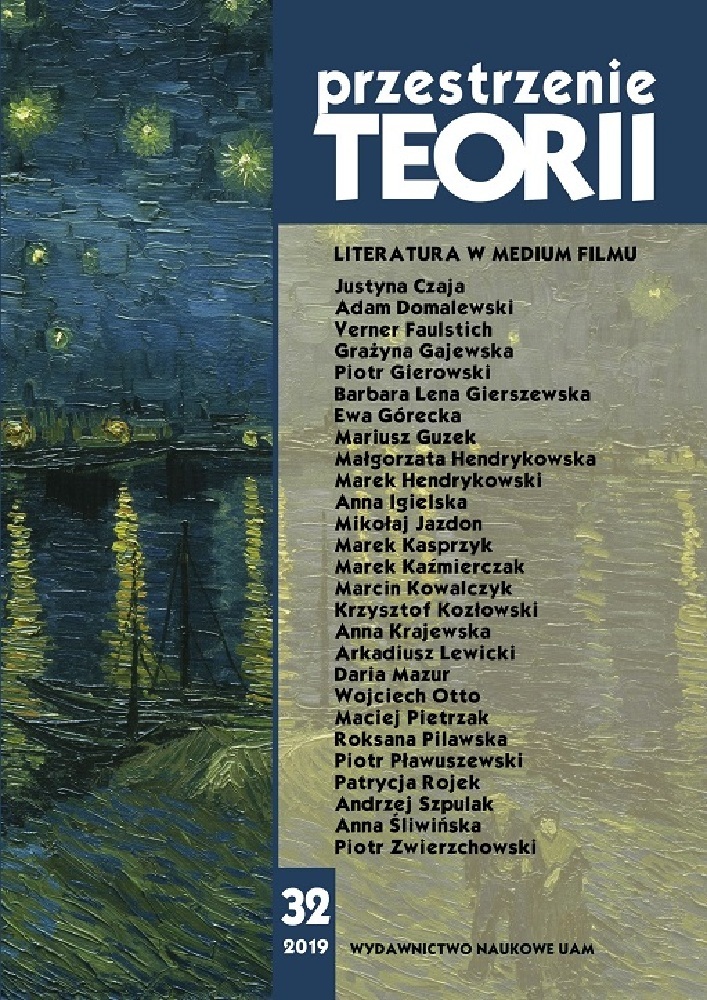Abstrakt
Faulstich Werner, Teoria systemu społecznego obiegu literatury [Theory of the Social System of Literature Circulation]. „Przestrzenie Teorii” 32. Poznań 2019, Adam Mickiewicz University Press, pp. 435–451. ISSN 1644-6763. DOI 10.14746/pt.2019.32.24.
The main hypothesis of literature circulation in a theory system can be formulated as follows: literature circulation is an inextricable element of literature, while literature constitutes an integral part of literature circulation. To provide evidence to this supposition, it is necessary to draw from the definition of a system proposed by Helmut Wilke in his Systemtheorie (1982). The social circulation of literature demands the emergence of a series of subsystems which, as part of the system, are characterised by their own factors, relations and ways of organisation. The most important category, enabling us to tell the difference between various subsystems of the literature circulation, is the medium. It goes without saying that any kind of literature is passed on via a particular kind of medium, i.e. the novel through the medium of the book, radio drama through the medium of radio, the feature film through the medium of film, stage drama through the medium of theatre, etc. It is impossible to separate “Literature” from “Circulation”. As a consequence, the history of literature is neither a pure history of a particular
piece or utopia (the latter being the approach of the idealistic literary studies), nor pure history of media (technology) as a part of a general history of communication and society (which is the journalism approach). Instead, it clearly separates itself from both, i.e. as a history of a mediated utopia.
Licencja
Autorzy
Autorzy tekstów przyjętych do publikacji w czasopiśmie „Przestrzeniach Teorii” są zobowiązani do wypełnienia, podpisania i odesłania na adres redakcji umowy o udzielenie nieodpłatnej licencji do utworów, z zobowiązaniem do udzielania sublicencji CC.
Zgodnie z umową, autorzy tekstów opublikowanych w czasopiśmie „Przestrzeniach Teorii” udzielają Uniwersytetowi im. Adama Mickiewicza w Poznaniu niewyłącznej i nieodpłatnej licencji oraz zezwalą na użycie sublicencji Creative Commons Attribution-NonCommercial-NoDerivatives 4.0 International (CC BY-NC-ND 4.0).
Autorzy zachowują prawa do dalszego, swobodnego rozporządzania utworem.
Autorzy, którzy wykorzystują w swoim tekście cudze utwory (np. ilustracje, fotografie) proszeni są o dostarczenie do redakcji czasopisma zgodę na publikację od uprawnionych podmiotów.
Użytkownicy
Zainteresowani użytkownicy internetu uprawnieni są do korzystania z utworów opublikowanych po 2015 roku „Przestrzeniach Teorii” tylko w calach niekomercyjnych, pod następującymi warunkami:
- uznanie autorstwa - obowiązek podania wraz z rozpowszechnionym utworem, informacji, o autorstwie, tytule, źródle (odnośniki do oryginalnego utworu, DOI) oraz samej licencji;
- bez tworzenia utworów zależnych - utwór musi być zachowany w oryginalnej postaci, nie można bez zgody twórcy rozpowszechniać np. tłumaczeń, opracowań.
Do wszystkich tekstów opublikowanych przed 2015 r. prawa autorskie są zastrzeżone.
Inne
Uniwersytet im. Adama Mickiewicza w Poznaniu zachowuje prawo do czasopisma jako całości (układ, forma graficzna, tytuł, projekt okładki, logo itp.).

